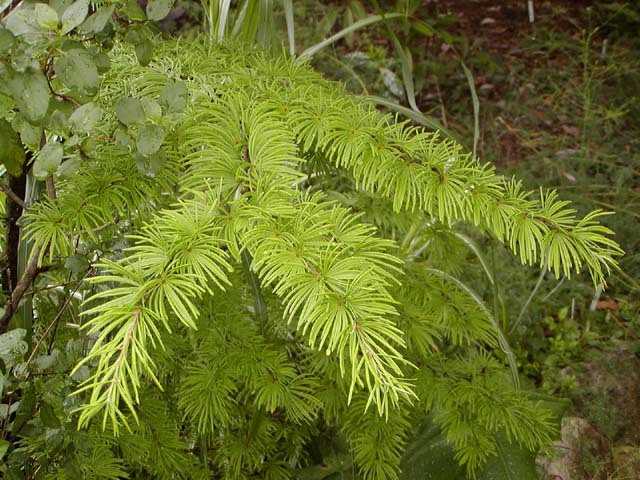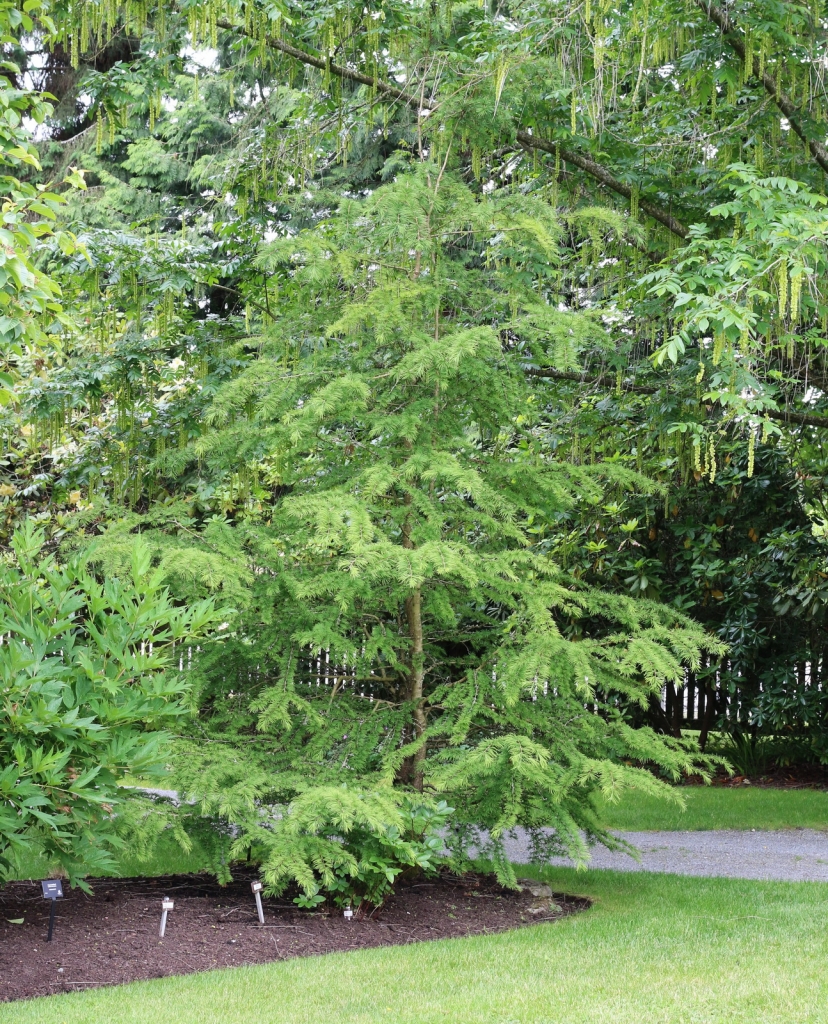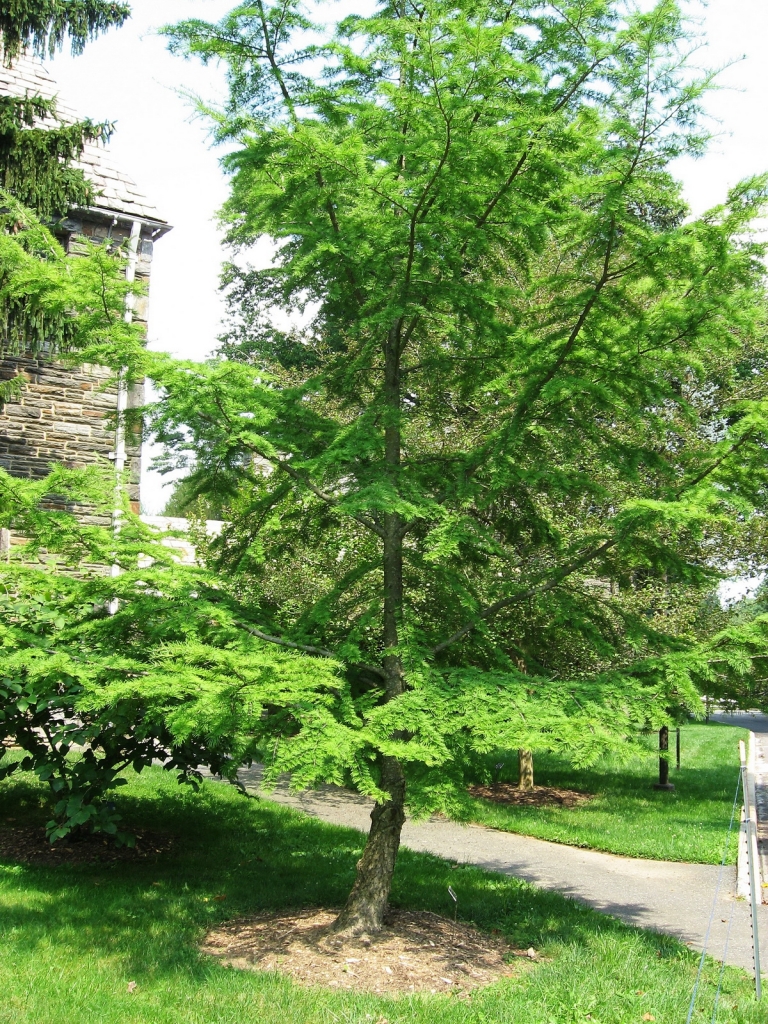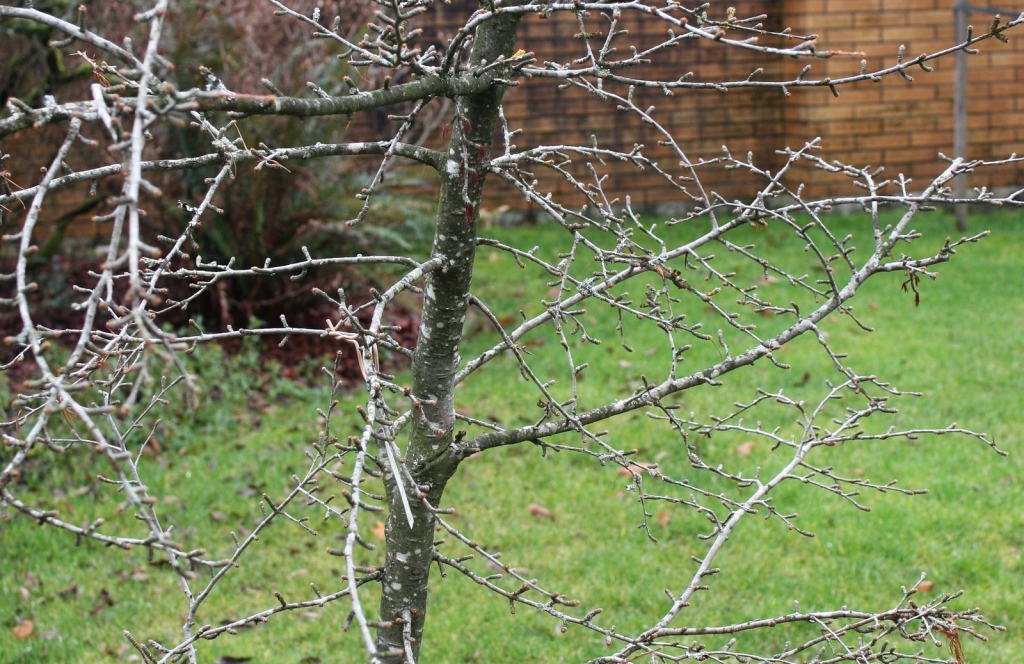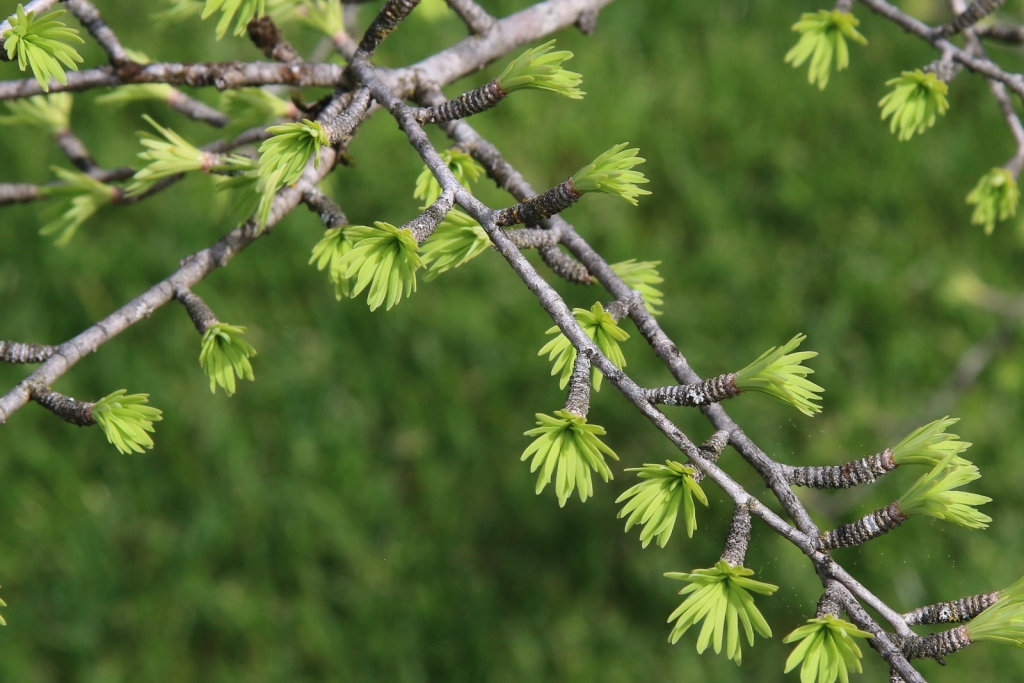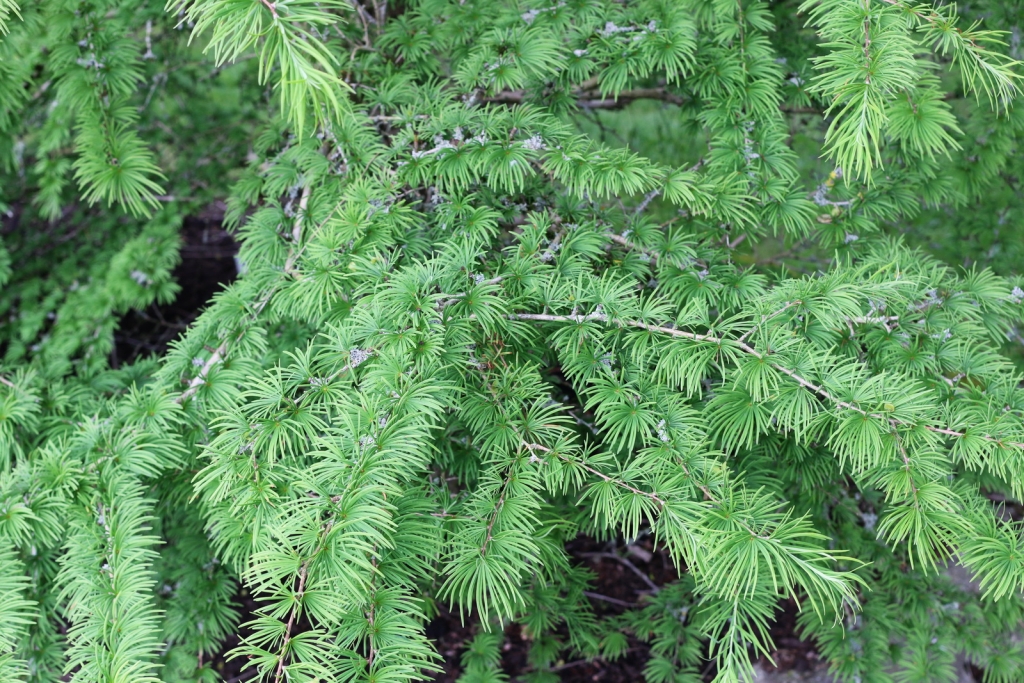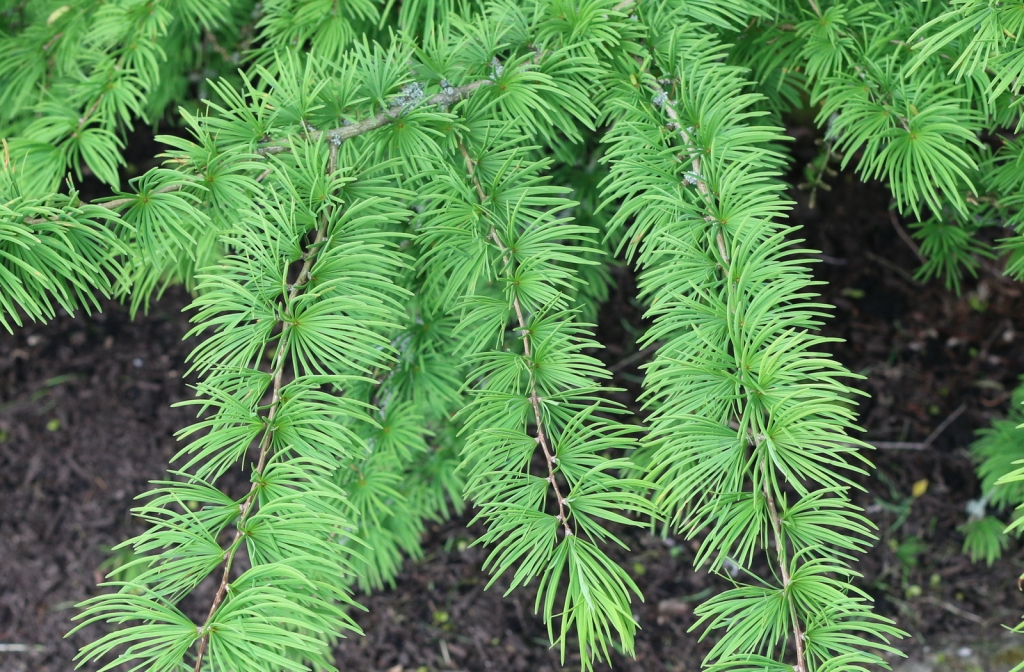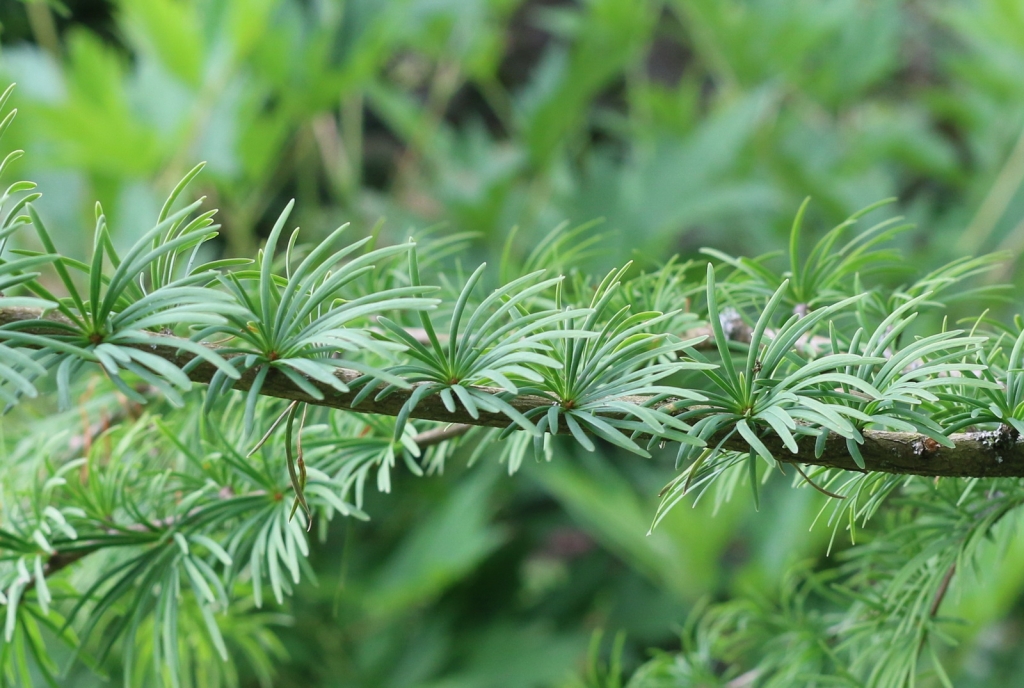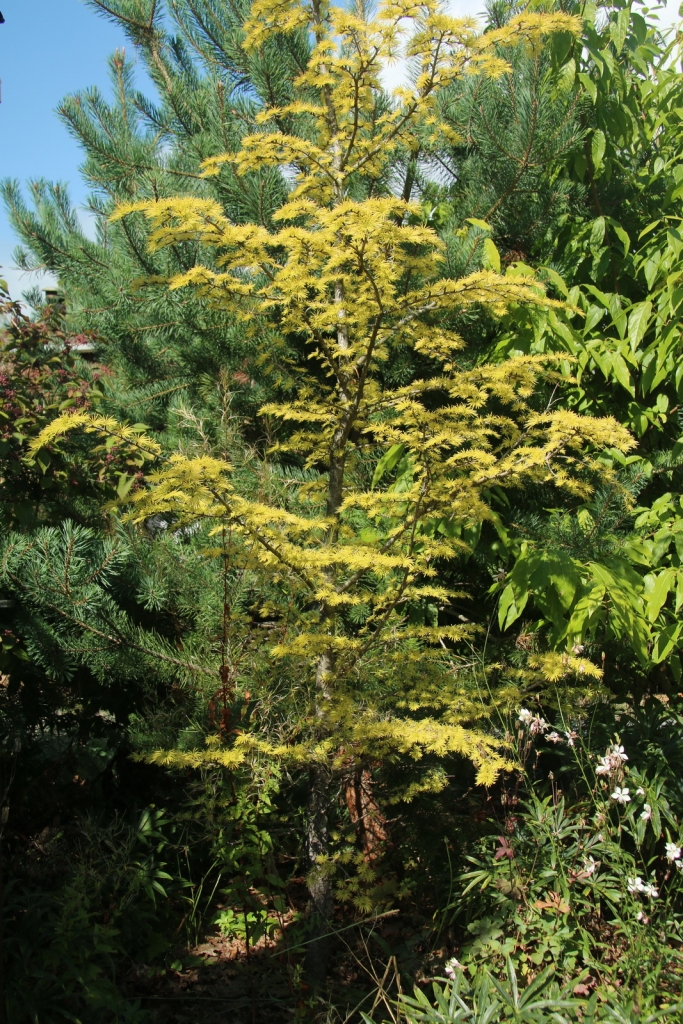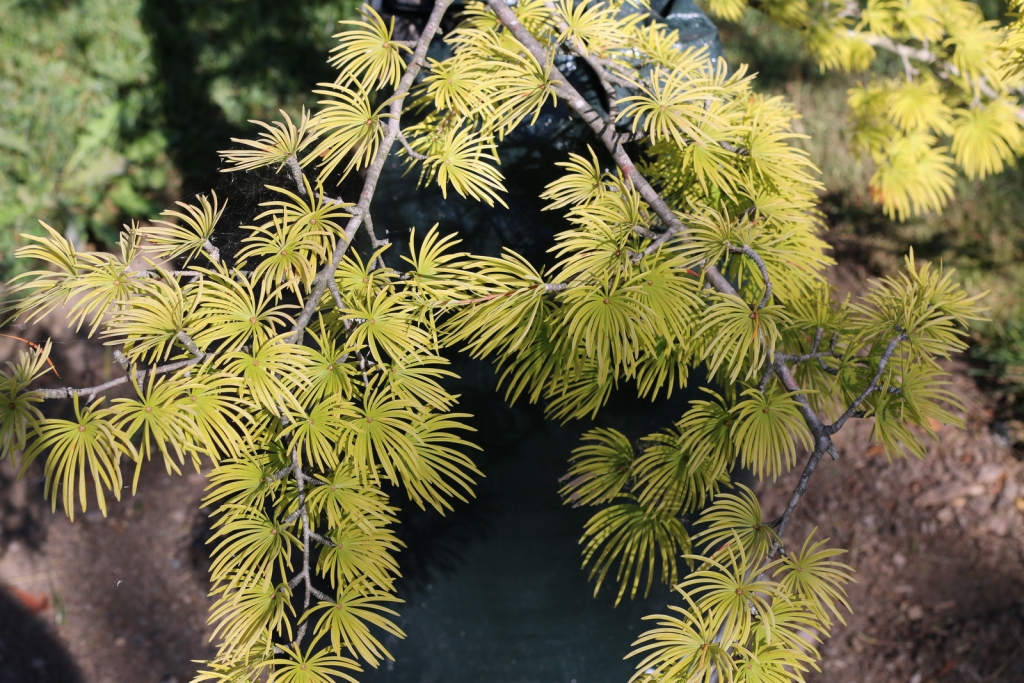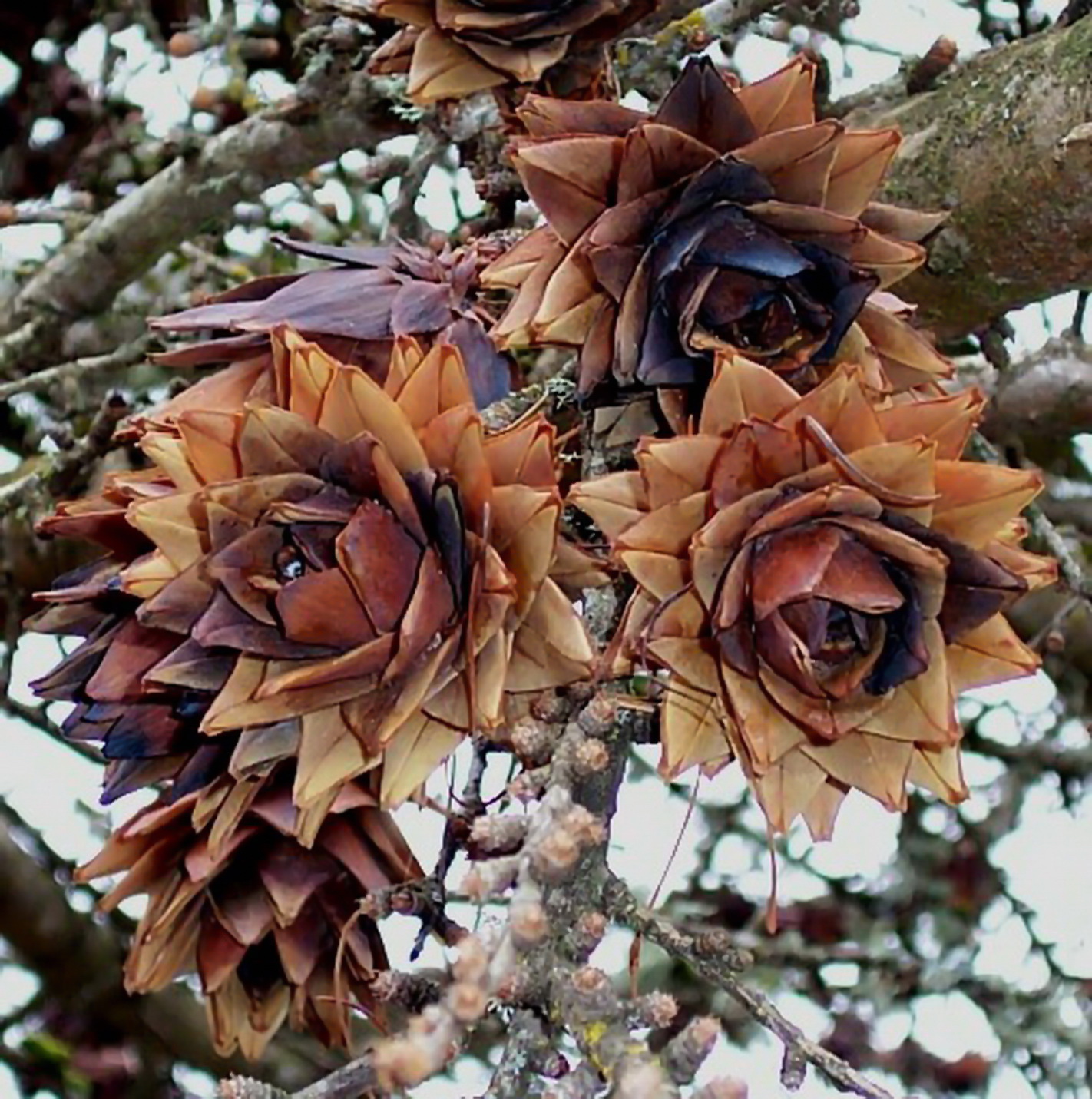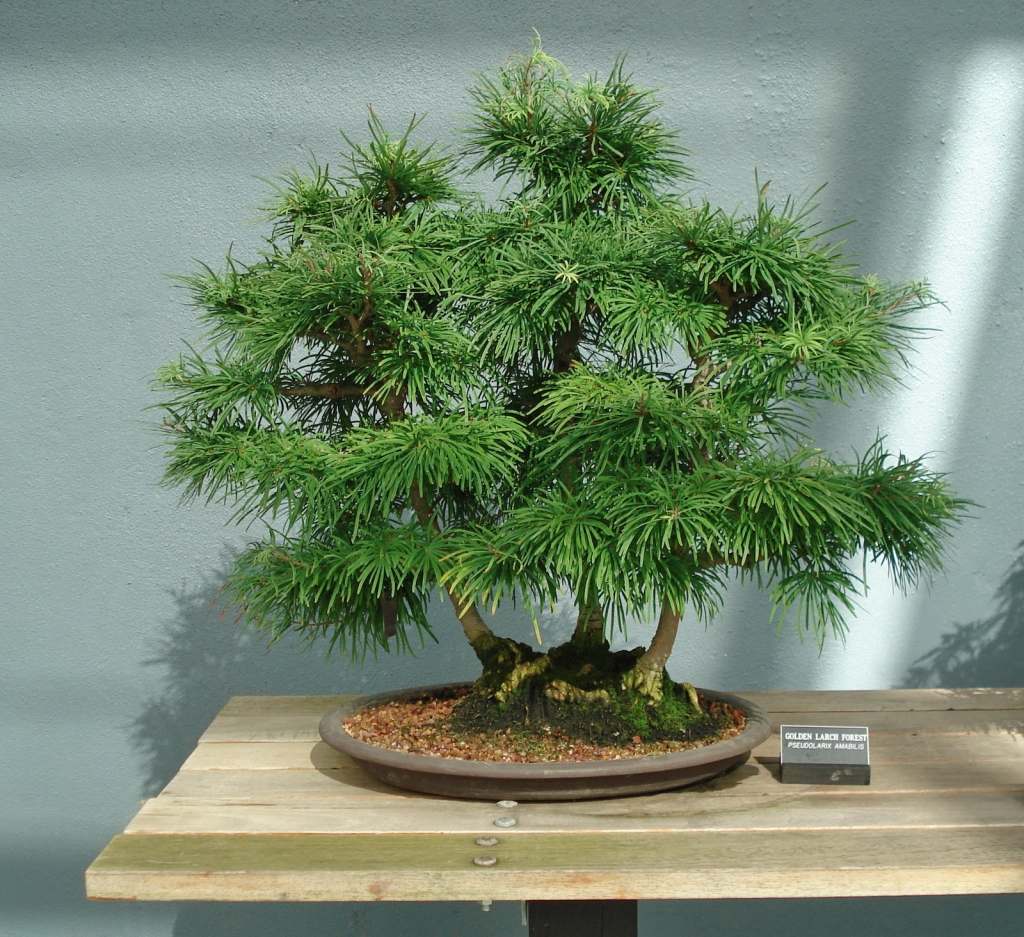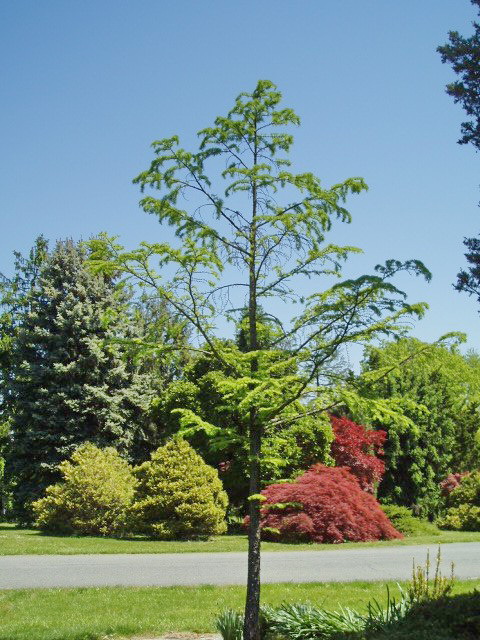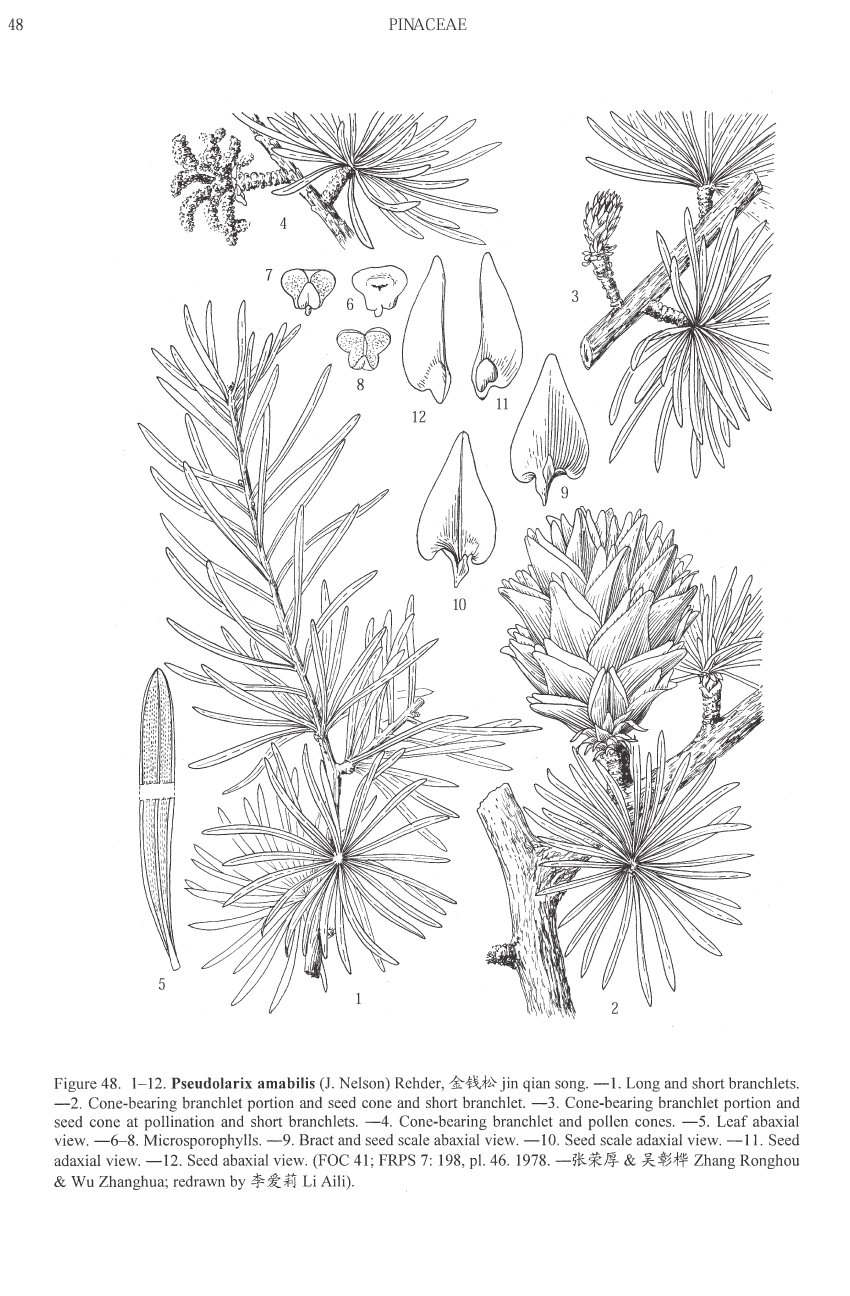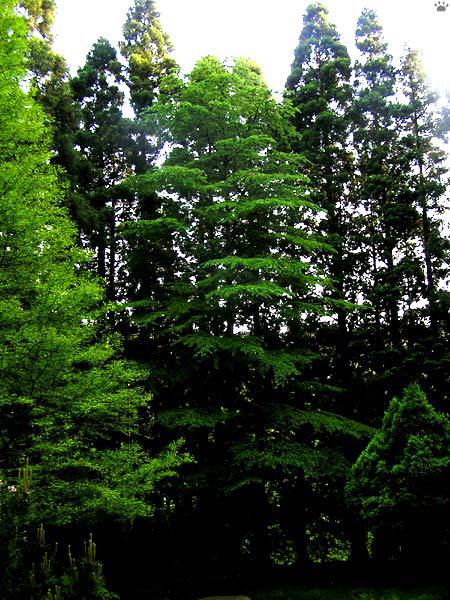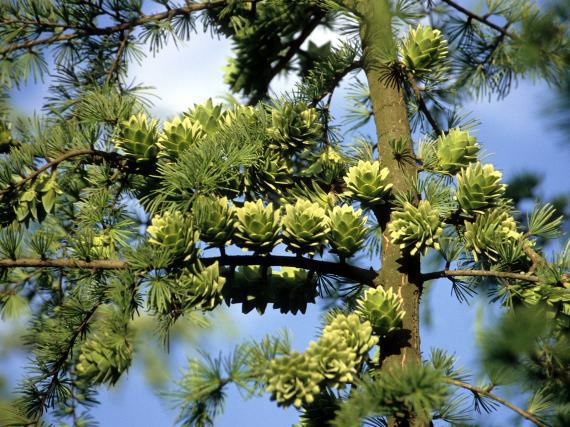Pseudolarix amabilis, as described in 1919 by (J. Nelson) Alfred Rehder (1863-1949), in the 1st edition of Journal of the Arnold Arboretum, is commonly known as Golden larch; as well as é‡‘é’±æ¾ (jin qian song) in the Chinese language. In the Latin language, 'œamabilis' translates into 'œlovely,' aptly describing trees of this species.
Ethnobotany. The wood has been used for furniture, boats, and bridges. It is most common, though, as an attractive ornamental tree with striking golden foliage in the fall. It is particularly useful in warm humid climates where Larix will not thrive, and is also quite a popular species for bonsai.
Description. Golden larch is a deciduous, coniferous species of tree with a broadly pyramidal crown and wide spreading horizontal branches, developing a rather open habit at maturity. This conifer growing to mature heights of (125 feet (40 m); with a straight round trunk up to 60 inches (150 cm) in diameter, measured at breast height.
- Bark is gray-brown in color, rough and flaking, breaking into thick, square scales.
- Branches grow irregularly to about the 5th or 6th order, the smallest branches nodding at the tips. Overall, its growth habit resembles Cedrus more than Larix.
- Branchlets are strongly dimorphic, though less so than in Larix. The long shoots usually develop from 1- or 2-year-old short shoots; with leaves that are spirally arranged and radially spreading. They are initially reddish brown or reddish yellow in color, glossy and glabrous, becoming yellowish gray, brownish gray, or rarely purplish brown by their 2nd or 3rd year, finally maturing gray or dark gray. Short shoots develop from axillary buds on long shoots; their leaves are radially arranged in false whorls of 10 to 30 (often spirally spread like a discoid star). Most short shoots do not produce long shoots and instead grow 0.08 to 0.12 inch (2 - 3 mm) per year, to a maximum length of about 1.4 inches (3.5 cm).
- Foliar buds have an ovoid shape with free scales free at the apex.
- Leaves (needles) are Blue-green in color adaxially, pale green abaxially, growing either slightly curved or straight. They are flexible, turning golden-yellow before falling in autumn. Individual needles measure 0.8 to 2.2 inches (2 - 5.5 cm) long, by 0.06 to 0.16 inch (1.5 - 4 mm) thick (wider than in Larix), slightly keeled adaxially, with stomatal lines abaxial in 2 bands separated by midvein.
- Pollen cones are borne terminally on short shoots in umbellate clusters of 10 to 25, becoming pendant at maturity. The pollen, shed in April, is 2-saccate, resembling Abies and Pinus, but not Larix pollen.
- Seed cones resemble those of Keteleeria more than any other genus. They are green or purple-green in color when young, maturing reddish brown; with an obovoid or ovoid shape; measuring 2 to 3 inches (5 - 7.5 cm) long by 1.6 to 2 inches (4 - 5 cm) broad; borne solitary, erect, shortly pedunculate, and terminal on short shoots. They develop and mature in a single year, at the end of which the rachis breaks up and the cone disintegrates (this is different from Abies and Cedrus, which have dehiscent scales on a persistent rachis).
- Seed scales number 18 to 30 per cone, with a deltoid to ovate outline. They are thick, woody, and widely spreading, measuring 1.12 to 1.4 by circa 0.64 inch (2.8-3.5 × ca. 1.7 cm), with a longitudinal, central, densely pubescent ridge adaxially, exposing the seedwing before maturity but not releasing the seed until the cone breaks up.
- Bract scales have an ovate-lanceolate outline and are 1/4 to 1/3 as long as seed scales, with denticulate margins, adnate to seed scales at the base and shed together with them at maturity.
- Seeds are white, with an ovoid shape, measuring 0.24 to 0.28 inch (6 - 7 mm), with resin vesicles on each side; they mature in October.
- Seed wings are light yellow or brownish yellow, glossy adaxially, with a triangular-lanceolate shape, measuring circa 1 inch (2.5 cm) long, extending beyond the scale margin at maturity.
Distribution. This species is native to China, although the native range is unclear; but probably the lower Chang Jiang valley - northern Fujian, Hunan, Jiangxi, and Zhejiang provinces; it has long been cultivated in southern Anhui, western Hubei, southern Jiangsu, and eastern Sichuan, growing at elevations of 350 to 3,500 feet (100 - 1000 m) above sea level (to 5,000 feet/1500 m on Jiuling Shan), in areas with a warm temperate climate and 60 to 80 inches (1,500 - 2,000 mm) of annual precipitation, with no dry season. It occurs as a component of evergreen and deciduous broad-leaved mixed forests. Along the lower Chiang Jiang it is found with
Acer spp.,
Carpinus spp.,
Catalpa ovata,
Celtis spp.,
Quercus spp.,
Rhus spp.,
Juglans cathayensis,
Nyssa sinensis,
Ulmus spp., and other broadleaf trees. On Lu Shan in Jiangxi it is a canopy co-dominant in a seral (logged) forests with
Pinus massoniana,
P. tabulaeformis,
Pterocarya spp.,
Platycarpa strobilacea and other species.
Hardy to USDA Zone 6 - cold hardiness limit between -10° and 0°F (-23.2° and -17.8°C).

